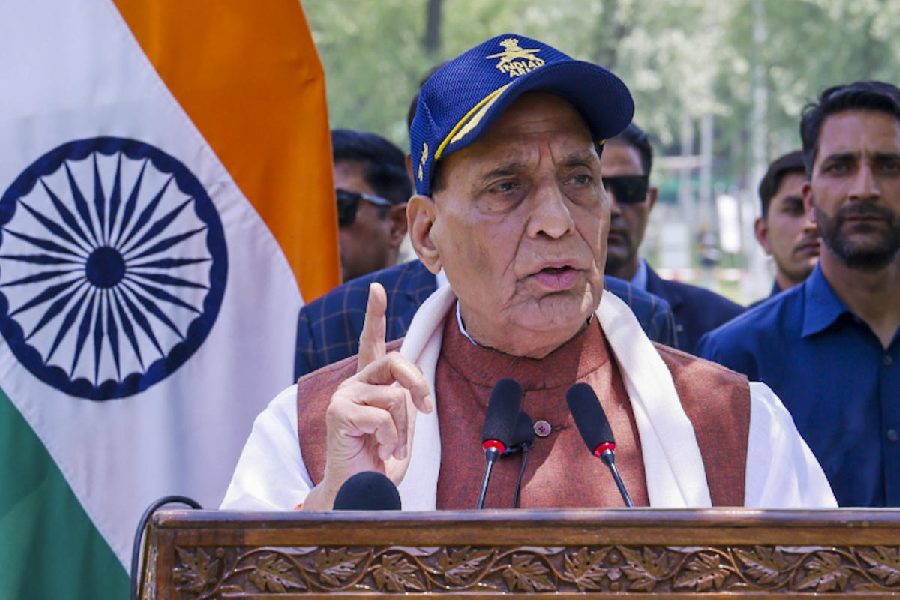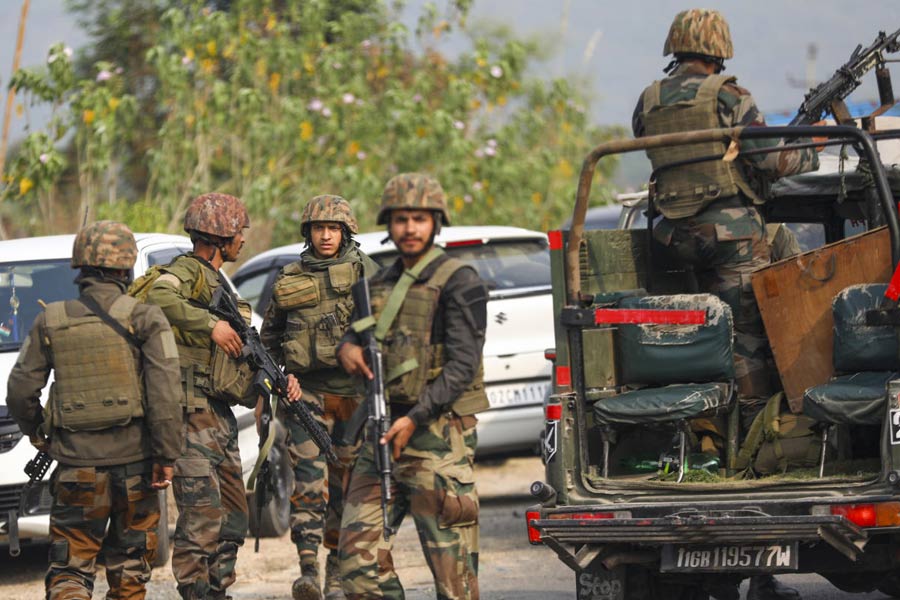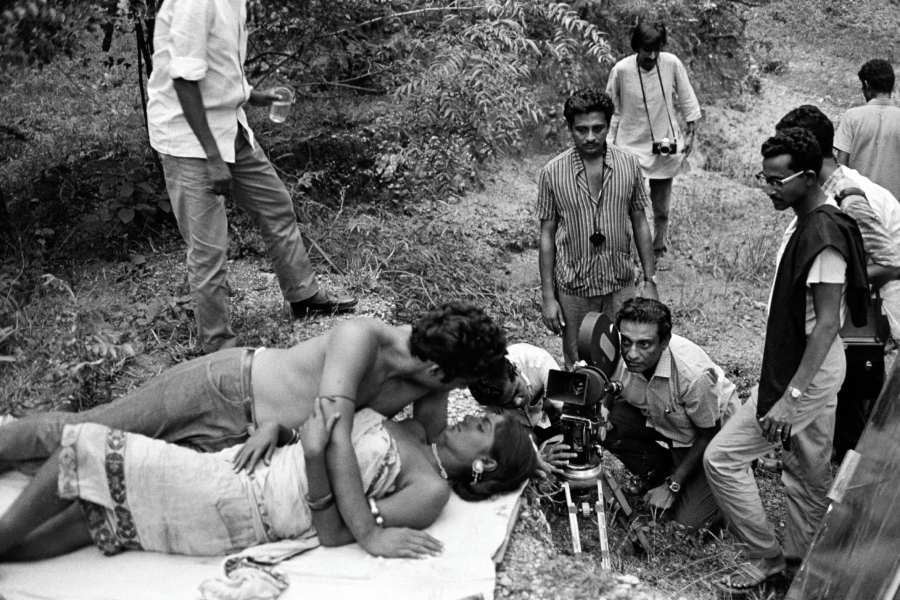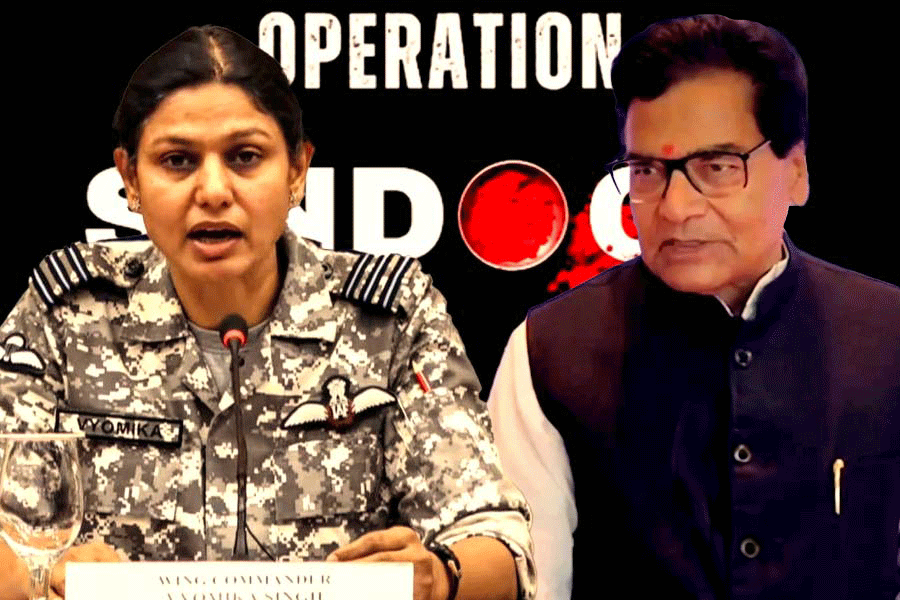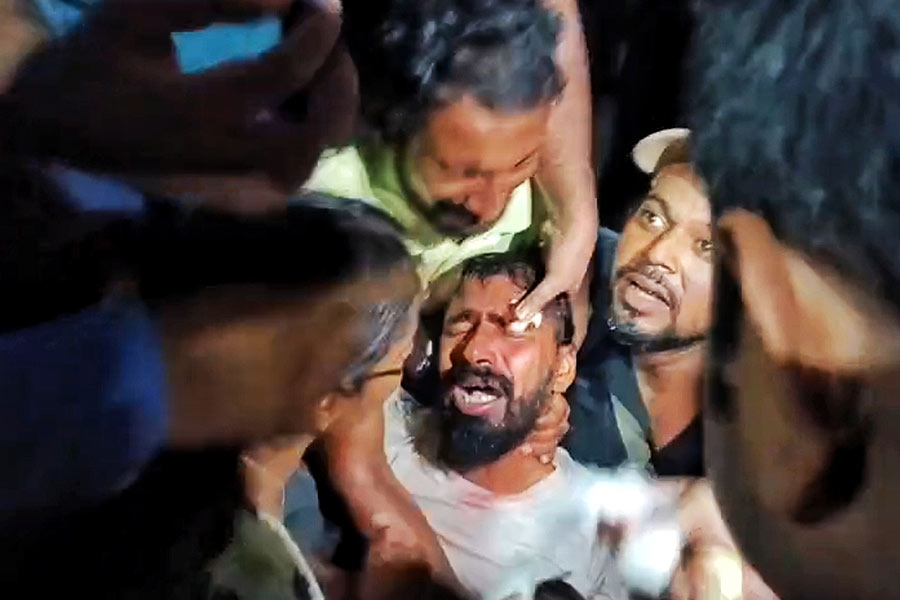 |
| The Durga Puja at Mantu Yadav’s house in Danapur last year. Picture by Ashok Sinha |
This festive season, pandal-hoppers can add to their spree a few of the city’s residential Durga Pujas.
Apart from the homely touch these Pujas offer, the families organise the entire event on their own. These Pujas may not be as grand as the locality ones but are no less exciting with the tradition and nostalgia involved. The family members also do not take any subscription from any organisation or neighbours.
The Puja by Shashi Shekhar Rastogi in Patna City is an age-old tradition. Rastogi, a jeweller, has been carrying on the legacy of his maternal grandfather who was a freedom fighter. “The Puja was started by my maternal grandfather Shivratan Lal Rastogi in 1942 to ignite the spirit of patriotism. The Durga idol resembled Bharat Mata (Mother India). Another statue installed was of Shivaji (known as the Great Maratha). The Puja depicted Durga handing over a sword to Shivaji.”
He added: “My grandfather wanted to motivate people to join the Independence struggle. The East India Company banned this Puja the very next year, as they understood the meaning of this representation. However my grandfather convinced officials of the East India Company but the statue of Shivaji was not installed.”
He said: “Even today, Goddess Durga resembles Bharat Mata. She rides a lion. So we keep a lion’s structure but we also build a white elephant as my grandfather used to.”
“As we are jewellers by profession, we think it is our duty to offer the Goddess ornaments designed by us. We also keep the idol on a silver singhasan (throne). Around five tolas of gold and 32kg silver is used to decorate the idol and the structure of elephant and throne,” he said.
Mantu Yadav’s Puja in Danapur, though not very old, has been drawing crowds since its inception in 2011.
Mantu (34), the mukhiya (village head) of Lakhni Bigha village started the Puja in 2001. “I started the Puja after I became the mukhiya. My wife has been observing Navratri for many years. So when I asked her whether we could start the Puja at our home, she readily agreed,” he said.
On the uniqueness of his Puja, Yadav said: “Even if you come to our Puja after five or six years, you would find that the features have not changed. We maintain the same structure such as the Goddess’s eyes, height and other details. The other attraction is the bhog, which we prepare on a large-scale on three consecutive days — Saptami, Ashtami and Navami. We prepare bhog for 1,000 people on Saptami.”


